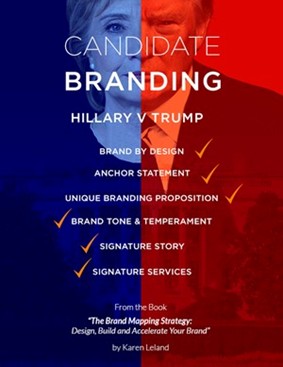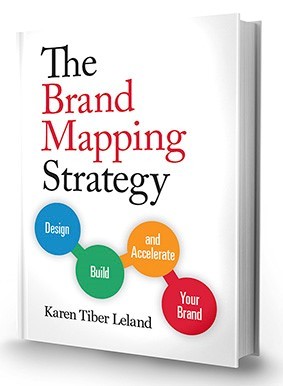The Making of Legends
I have written several books, on business, entertainment, history and pop culture. The Legends series is an amalgamation of all of them.
My four Legends books include “Pop Icons and Business Legends,” “The Classic Television Reference,” “Houston Legends” and “Non-Profit Legends.” This series will have three more to come.
Most people are more products of pop culture than they are of training. Business dilemmas, solutions and analyses are framed first in the field of reference (pop culture teachings of their youth) and then reframed in modern business context.
Working with companies, I have realized that presenting organizational strategies as an extension of previously-held pop-culture values gets more understanding, comprehension, attention and support.
Most leaders of today’s corporations grew up in the 1950s-1980s. I have conducted countless strategy meetings where leaders cannot articulate business philosophies, but they can accurately recite lyrics from “golden oldie” song hits, TV trivia and advertising jingles.
Being one of the rare senior business advisors who is equally versed in pop culture, I found that bridging known avenues with current realities resulted in fully articulated corporate visions. Many a Strategic Plan was written by piecing together song fragments, nostalgic remembrances and movie scenarios, then were aptly converted into contemporary corporate nomenclature.
When we recall the messages of the songs, movies and books of the 1930s, 1940s, 1950s, 1960s, 1970s, 1980s and 1990s, we realize that today’s adults were formerly taught in their youths to:
- Think Big Picture.
- Conceptualize your own personal goals.
- Understand conflicting societal goals.
- Fit your dreams into the necessities and realities of the real world.
- Find your own niche, do your thing.
- Do something well and commit to long-term excellence.
- Seek truths in unusual and unexpected sources.
- Share your knowledge, and learn further by virtue of mentoring others.
How individuals and organizations start out and what they become are different concepts. Mistakes, niche orientation and lack of planning lead businesses to failure. Processes, trends, fads, perceived stresses and “the system” force adults to make compromises in order to proceed. Often, a fresh look at their previous knowledge gives renewed insight to today’s problems, opportunities and solutions.
I developed the concept of integrating Pop Culture Wisdom with management training and business planning over the last 40 years. It all started by teaching The History of Rock & Roll Music when I was in graduate school back in 1971. Fancy the concept of analyzing a recent time frame (the 1950s and 1960s) as social studies.
From 1958-1982, I produced many entertainment documentaries for radio, comprising anthologies of pop music. I emceed concerts with stars like Elvis Presley, Duke Ellington, Ella Fitzgerald, Little Richard, Kenny Rogers, The Beach Boys, Roy Orbison, Simon & Garfunkel, Nelson Riddle, Dionne Warwick and Andre Previn. I have produced videos with stars from Audrey Hepburn to Vincent Price, plus television public service announcements. That was another lifetime ago.
For the longest time, I didn’t let my business clients know about my years as a radio DJ, status as a musicologist and experiences in pioneering radio’s “golden oldie show” formats. I didn’t think that it lent credibility to wise business insights. However, years of experiences with corporate leaders made me come full circle and start integrating pop culture lingo into the conversations, consultations and planning processes.
All business leaders agreed that no road map was laid out for them. Executives amassed knowledge “in the streets,” through non-traditional sources. Few lessons made sense at the time and, thus, did not sink in. When repackaged years later, executives vigorously enjoyed the rediscovery process. The previously overlooked became sage wisdom. Knowledge they were not ready to receive as youngsters before became crystal clear in later times.
Reasons for Caring, Giving and Serving Others
I got into volunteering and community service at an early age. I found it heartening to be a good citizen and that community stewardship made me a better professional.
I have worked with more than 1,500 non-profit, public sector, and non-governmental entities over many decades. I interfaced with many on behalf of corporate clients. I conducted independent performance reviews of many. I served on boards of directors, search committees, awards panels, review boards and task forces for many. I have spoken at conferences, strategic planning retreats, symposia, workshops and board meetings for hundreds.
Non-profit organizations are the backbone of modern society. Every individual and business should support one or many. All of us are recipients of their services, community goodwill and worthwhile objectives.
There has never been a full-scope book on non-profit service. There have been books on fundraising and some articles on volunteer management and the business aspects of running non-profit organizations.
My “Non-Profit Legends” book covers everything non-profit, including such topics that have never appeared in an internationally published edition, such as:
- Public service announcements.
- Categories of non-profit organizations (my own creation).
- The history of volunteering and community service, spanning 300 years. This parallels a chapter in my previous book, “Pop Icons and Business Legends,” where I covered a 400-year history of business.
- Strategic planning, how-to instructions.
- Pop culture influences of non-profit icons, events and campaigns.
- Communications programs for NPOs.
- Quotes on community stewardship, leadership and related topics.
- Understanding your true service.
Here is what I wish to inspire via this book:
- Motivate NPOs to be unique, true to purpose and make differences.
- Encourage dialog on a Big Picture approach to non-profits.
- Inspire new dimensions to corporate philanthropy.
- Amplify discussions on community standards and ethics.
- Encourage greater collaboration and partnerships.
- Inspire a non-profit awards recognition program.
- Inspire more non-profit presence on the internet.
- Inspire more young people into community service.
- Enlighten international audiences on Western world philanthropy tenets.
Here are the “heart and soul“ reasons for being engaged in humanitarian service:
- Being good citizens
- Volunteering, as time permits and worthy causes appear
- Helping others
- Business supporting communities
- Non-profit organizations operating more business-like
- Finding one’s passion
- Working together with others
- Exemplifying ethical behavior
- Potlache: feeling happy and rewarded when serving others is appreciated
- Sharing talents and skills
- Innovating programs, strategies and methodologies
- Recognizing and celebrating service
- Honoring our elders
- Involving young people in the lifelong quest toward community service
- Diversity of society is reflected in service
- Building communities
- Interfacing with others
- Learning from history
- Enlightening others
- Inspiring the next generation
- Creating new constituencies
- Re-involving those who have given, volunteered and participated in the past
- Understanding the relationship of causes to quality of life
- It’s good for business
- It’s the right thing to do
- Community events are fun and entertaining
- Knowledge is transferable from community service to family and business
- Injects heart and soul into yourself and your stakeholders
- Leaders exemplify legendary behavior
- Serving the under-served
- Predicting new community needs
- Benefiting humanity
- Fostering respect
- Communicating and developing people skills
- Being productive and fulfilled
- Planning for future programs and community service
- Accountability of non-profit organizations and their programs
- Learning from failure and success
- Putting ourselves in others’ shoes
- Visioning the future of communities and the population
- Feeding, clothing, sheltering, educating and inspiring the needy
- Sharing the wealth
- Advocating for others
- Learning more about life
- Understanding conditions and circumstances
- Discovering new frontiers, with opportunities to master
- Networking, beneficial for all concerned
- Growing as human beings
- Growing as a society
- Having fun while serving
- Humanity as the basis for global peace and understanding
About the Author

Hank’s latest book functions as a ‘PDR of business,’ a view of Big Picture strategies, methodologies and recommendations. This is a creative way of re-treading old knowledge to enable executives to master change rather than feel as they’re victims of it.
Power Stars to Light the Business Flame is now out in all three e-book formats: iTunes, Kindle, and Nook.

 Melissa Davies is an internationally respected expert on developing workplace environments where people are able to show up better. She runs
Melissa Davies is an internationally respected expert on developing workplace environments where people are able to show up better. She runs  Get more tips on managing effective meetings in the new book
Get more tips on managing effective meetings in the new book  Internationally-regarded, award-winning career success pundit, consultant and speaker Ines Temple is President of LHH – DBM Peru and LHH Chile—companies that are leading career transition and executive coaching organizations in their respective countries. She is also Chairman of the Board of CARE Peru, a leading non-profit humanitarian organization fighting the injustice of poverty with a special focus on disadvantaged girls. Temple is also a speaker at conferences and universities around the world due to her keen perspectives and insights, also making her a valued media expert source. She may be reached online at
Internationally-regarded, award-winning career success pundit, consultant and speaker Ines Temple is President of LHH – DBM Peru and LHH Chile—companies that are leading career transition and executive coaching organizations in their respective countries. She is also Chairman of the Board of CARE Peru, a leading non-profit humanitarian organization fighting the injustice of poverty with a special focus on disadvantaged girls. Temple is also a speaker at conferences and universities around the world due to her keen perspectives and insights, also making her a valued media expert source. She may be reached online at  Below is an examination of both candidates’ personal branding successes, challenges and resulting lessons for us all in six specific areas. The success of any brand — in business, politics or otherwise — boils down to how the brand performs across these six key dimensions. Each dimension, including exactly how each candidate fared therein as well as the correlated Personal Brand Takeaways, can help other enterprising professionals achieve in kind.
Below is an examination of both candidates’ personal branding successes, challenges and resulting lessons for us all in six specific areas. The success of any brand — in business, politics or otherwise — boils down to how the brand performs across these six key dimensions. Each dimension, including exactly how each candidate fared therein as well as the correlated Personal Brand Takeaways, can help other enterprising professionals achieve in kind. 2. Anchor Statement. What is the go-to description of who you are and what you do? This is sometimes referred to as an elevator pitch.
2. Anchor Statement. What is the go-to description of who you are and what you do? This is sometimes referred to as an elevator pitch. Karen Leland is CEO of Sterling Marketing Group, a branding and marketing strategy and implementation firm helping CEO’s, businesses and teams develop stronger personal and business brands. Clients include AT&T, American Express, Marriott Hotels, Apple Computer, LinkedIn and Twitter. She is the best-selling author of 9 books, including her most recent title,
Karen Leland is CEO of Sterling Marketing Group, a branding and marketing strategy and implementation firm helping CEO’s, businesses and teams develop stronger personal and business brands. Clients include AT&T, American Express, Marriott Hotels, Apple Computer, LinkedIn and Twitter. She is the best-selling author of 9 books, including her most recent title,